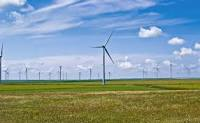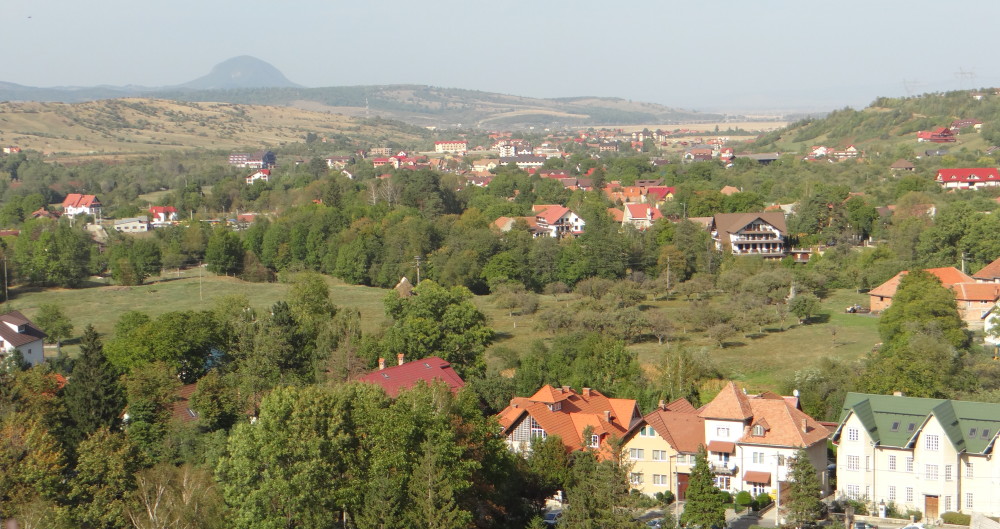
I saw the once verdant wheat fields of Eastern Europe covered with ugly wind turbines, slowly spinning their huge blades into the wind. A few funnel dust swirls were blowing the topsoil into the air. They did not appear to be connected to any storage station that would distribute the electrical power generated. I searched and found out that they were really not connected to any network, were not generating usable electricity, they were all for show to placate the “green growth” European bureaucrats who gave them money to install the eye sores instead of growing crops.
Turbines kill birds on a large scale around the world and disturb humans and wildlife. According to Save the Eagles International, “contrary to what we are told, wind farms will cause the extinction of many bird and bat species” because birds are naturally attracted to tall structures.
While millions of birds and bats are dying needlessly, wind turbines and solar panels are still installed around the world despite the fact that they produce inconsistent energy that cannot possibly replace the consistent and cheap energy produced by coal. The world’s economy needs fossil fuels, nuclear energy, and hydro-power that provide a constant source of electricity, not the small scale partial or intermittent Aeolian or solar energy.
In the green state of Vermont, a 28-turbine mega-wind project is being vehemently opposed by some board members and citizens in the towns of Windham and Grafton, concerned that the power station would affect property values and the environment.
Iberdrola, the Spanish public multinational utility company based in Bilbao, Spain, proposed the project. Subsidiaries include Scottish Power, Iberdrola USA, and Elektro Brazil, with the largest shareholder in 2013, Qatar Investment Holding.
Frank Seawright, Windham Selectboard Chairman, remarked that more than 200 houses in Windham are located within a mile and a half from the proposed turbines and the rest are also close, including his own home, 3,000 feet from the proposed site.
Lacking confidence that the developers and the Public Service Board will protect the locals in accordance to S.260, Seawright said:
“The people who complain about the noise are dismissed by wind developers as just a bunch of trouble makers. That’s probably one of the worst things they can do is to just blame the victim.”
Act 174 (S.260), act relating to improving the siting of energy projects in Vermont passed and was signed into law in June 2016. http://legislature.vermont.gov/bill/status/2016/S.260
The Selectboard sent a letter to Iberdrola citing their well-founded concern for water quality, wildlife, and human health.
“We are unwilling to subject any of our town’s property owners to the unknown short- and long-term effects of exposure to turbine noise, vibration, infrasound, and shadow flicker.” http://watchdog..org/269280/mega-wind-project-faces-steep-opposition-in-vermont/
According to the Watchdog, the Selectboard members were concerned that the turbines would not produce consistent power, delivering on the average 60 percent of the time, and would destroy property values with no compensation for homeowners.
National Wind Watch tells a different story about the efficacy of wind turbine performance.
“Wind turbines generate electrical energy when they are not shut down for maintenance, repair, or tours and the wind is between about 8 and 55 mph. Below a wind speed of around 30 mph, however, the amount of energy generated is very small. Wind turbines produce at or above their average rate around 40% of the time. Conversely, they produce little or no power around 60% of the time.” https://www.wind-watch.org/faq-output.php
The annual financial benefit from Iberdrola would be $715,000 for Windham and $285,000 for Grafton. The most interesting objection was the “utilities lack of need for purchasing additional wind power” – they don’t need the electricity. Additional concerns were Iberdrola’s $27 million fine from Spain’s National Markets and Competition Commission and the higher cost of wind-generated electricity.
Watchdog quoted Seawright, who was frustrated with the Vermont government, “hell bent on getting these things:” [wind turbines]
“I have always voted for Democrats, (but) now I’m more concerned about the Democrats than the Republicans. The Democrats here seem to be exploiting the countryside.”
As long as there are government subsidies for wind and solar power projects to be exploited, despite the many failures and bankruptcies when billions of taxpayer dollars have been wasted, politics make strange bedfellows with “investors” and “developers.”
In 2001 a 400-acre site became a wind farm in Somerset Township, Pennsylvania. It was touted to produce 25,000 megawatt hours of electricity a year, enough to provide power to 2,500 families with “lower-cost, more environmentally friendly way to produce electricity.” This happened at a time when 52 percent of electricity in the U.S. was generated by coal-fired plants and for Pennsylvania, “the fourth largest coal-producing state, the figure is about 60 percent.”
Money came from sustainable energy funds and developers received federal energy tax credits. As John Hanger of Citizens for Pennsylvania’s Future said, “This is a terrific Earth Day present for the people of Pennsylvania. PECO customers will be the first in the commonwealth to directly help the planet through their local electricity choices.” http://old.post-gazette.com/businessnews/20010424wind6.asp
If these wind farms could have helped the citizens’ pockets, it would have been terrific. For starters, they had to pay higher electricity rates and some lost their coal-mining jobs as a result of mines closing around the country due to onerous EPA regulations. The other damaging side effects were felt later.
When I stopped in Somerset a few days ago, the turbine blades did not seem to move at all. An educational display was still posted outside the turnpike service plaza, with all the potential savings for the Earth from harnessing wind power. No mention of the huge costs associated with such a pie in the sky watermelon dream.
When the wind turbines break down, catch fire, rust out, or their blades disintegrate, they are abandoned by the thousands, ugly giants dotting the pristine landscape. They are seldom removed because the job would be too expensive. None of them have produced, by the time they were taken out of service, the amount of energy that was used to manufacture the giant turbine in the first place. And, the part that environmentalist do not like to talk about, is that all the steel, spare parts, transportation, assembly, maintenance, and slow wind down times were provided by fossil fuel-generated power.
As the American Elephants said, wind turbines are “the towering symbols of a fading religion” and… “Without government subsidy, they are unaffordable. With governments facing financial troubles, the subsidies are unaffordable. It was a nice dream, a very expensive dream, but it didn’t work.”
I might add that it was a dream born by the environmental watermelon religion, green on the outside, red on the inside.
ILEANA JOHNSON
American By Choice
